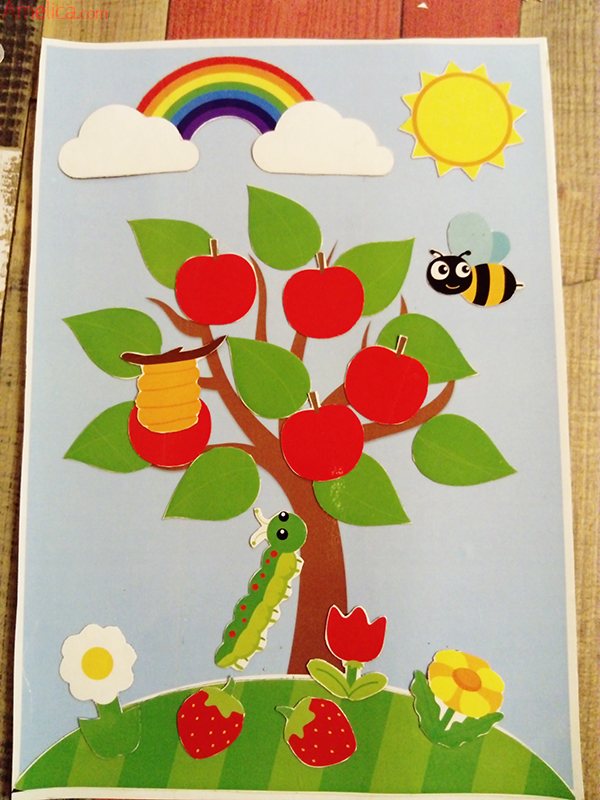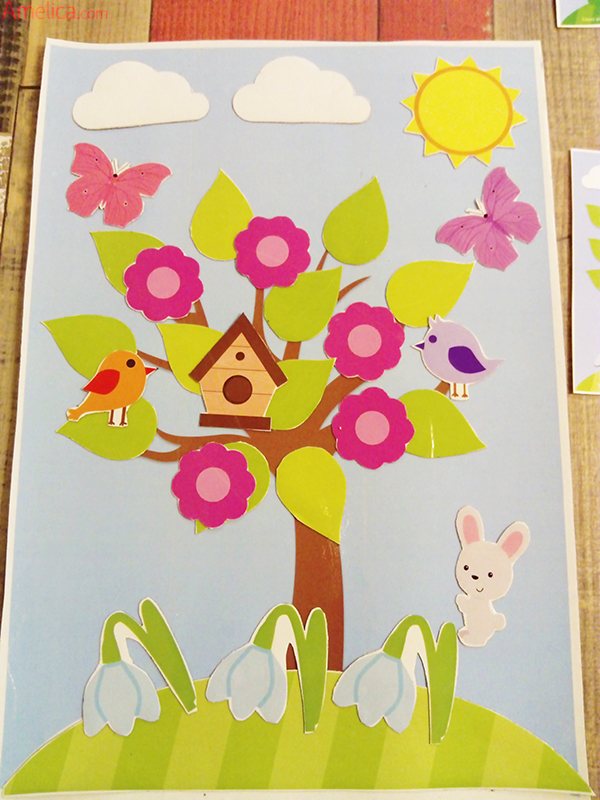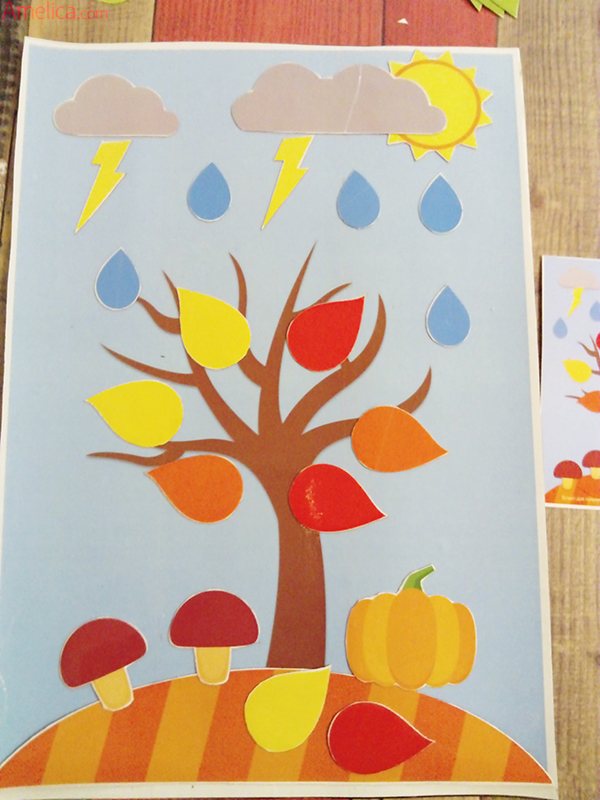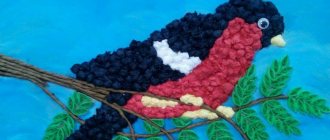Galaova Zalina Yurievna
Didactic games on the theme “Seasons”
Didactic games for the “Pyramid”
Didactic game “Complete”
(For children 4-7 years old)
A subgroup of children of 3-4 people participates in the game.
Goal: To consolidate children’s knowledge about seasonal changes in nature, supplement them with individual elements according to the seasons .
Material for the game: model “ Seasons ”
, card index of poems and riddles according to
the seasons , handouts for the game for each child.
Formation of ideas about the seasons in preschool children
3. Formation of ideas about the seasons in preschool children
Ideas about time in preschool children are formed gradually. And this process is associated with quite large difficulties in children’s perception of time and the relatively late development of time concepts. The reasons causing these difficulties include some properties and characteristics of time: its fluidity, irreversibility, the impossibility of returning the past and swapping the present and the future. This, of course, greatly complicates children's perception of time. Time has no visual forms and is not subject to sensory contemplation, therefore it is perceived indirectly, through movements or any activity associated with a certain time.
The “sense of time” can be at different stages of development. At an early age, it is formed on the basis of sensory experience without relying on knowledge of time standards. Subsequently, mastery of time measures and their application makes it possible to use the “sense of time” more widely, in a variety of conditions.
All concepts of time are based on various types of ideas. “Sensation, perception, and the ideas arising from them belong to the first stage of reflection of reality. Schematically, the stages of reflecting the surrounding reality can be represented as follows: sensation→perception→idea→knowledge.
Sensation is the original form of reflection of everything around us. However, sensations are an elementary process that reflects the individual properties of an object and the phenomenon of separate properties from objects does not exist. Therefore, the object as a whole is reflected in consciousness.
From sensations a perception is formed, which already reflects the totality of the properties of a particular object.
“Perception is a reflection in the consciousness of surrounding objects and phenomena acting on our sense organs in the totality of their properties and parts at a given moment with their direct impact on the sense organs.” Each perception is based on several sensations. Perception is the result of the activity of several senses. But in each case, one of the organs will be the leading one.
The next, more important step is presentation. Representation is an image of a previously perceived object or phenomenon that appears in a person’s mind. Representation is closely related to memory, thinking and imagination.
“The physiological basis of ideas is the traces left in the cerebral cortex from the excitations that existed before. Ideas usually arise under the influence of some impulse.” For a person, such an impetus is the word. For example, when this or that word is said, a person immediately has this image or some of its essential characteristics. “Representations according to content are divided into simple and complex. Simple includes one side of knowledge about nature. A complex representation is the union of two simple ones.”
“When forming ideas about the seasons, we relied on the position of N.F. Vinogradova, who believes that a child should perceive the world as a whole, where nature, man and society are represented in unity.” Preschool childhood is the period of a person’s life when ideas begin to form as the initial source of knowledge.
T. D. Richterman wrote that the more widely the world around him is revealed to a child, the more pronounced his cognitive interest becomes. It is cognitive interest that underlies children’s questions about time. “Children’s questions and their character tell us not only about the level of children’s knowledge and thinking characteristics, but also about the degree of development of interest and its content side.”
According to the research of T. D. Richterman, the child begins to distinguish temporary categories already at the end of the second year of life. The child begins to realize that some events pass quickly, while others must be waited for. The child, who initially lives only in the present tense, then begins to distinguish between the past and the future. The nature of preschool children's ideas about time is associated with their understanding of the properties of time, mastering time concepts, and the ability to navigate the time of day using natural phenomena. Children learn to characterize the seasons. And by the end of preschool age, the child should be familiar with the following basic relationships in inanimate and living nature, the most important signs of the seasons:
changes in midday sun height by season;
the dependence of air temperature on the height of the sun and the length of the day;
dependence of precipitation on cloudiness;
dependence of the condition of soil and reservoirs on air temperature;
dependence of vegetation changes on the degree of sun illumination and air temperature;
dependence of animal life on changes in inanimate nature.
We investigated the acquisition of ideas about the seasons by middle preschool children. Research results have shown that preschoolers have unclear ideas about the seasons and their essential characteristics. So, for example, to the question: “Why do you like this or that time of year?”, many children answered: “Because it’s my birthday at this time.” Children associate the seasons with events that are significant to them, and not with seasonal changes in nature. Children are little aware of natural phenomena characteristic of a certain time of year, for example, thunderstorm, lightning, thunder are characteristic of the spring period, frost, blizzard - for the winter.
Temporal concepts of different meanings are often combined in children. Children do not feel the difference in the words “dawn” and “dusk”, which denote the transition periods from night to day. They confuse the concepts of “day” and “day”; they do not know that a day is a part of a day. Some children do not notice differences in the color of the sky at different periods of the day and cannot establish the sequence of parts of the day. In their minds, the day ends at night and begins again in the morning.
Children have a weak understanding of the first signs of the seasons, the sequence of their onset, and the dependence of animal life on changes in inanimate nature. Children find it difficult to understand that the seasons go one after another without interruption, and do not end with winter. It is difficult for them to understand that the coming spring, for example, is not last spring. Children do not see novelty or change.
Children's thinking develops if they have to solve natural history questions, tasks that require the establishment of new cause-and-effect relationships and generalizations.
Questions are one of the main tools for learning. What should a good question be? It must be carefully thought out and formulated so that the answer to it stimulates new questions and answers...” (Richard H. Fleming). An unsuccessfully formulated question may not achieve its goal and may elicit a completely different answer than was intended.
To develop children’s ideas about the seasons, we held conversations with the children during children’s walks and offered to solve cognitive problems.
The first stage involved the reproduction of knowledge and skills. Children were asked questions: What happens to tree leaves in autumn? How does bird life change in autumn?
At the second stage, a narrow and shallow transfer of knowledge and actions was stimulated; children tried to develop an algorithm for these actions. What causes changes in the life of trees in autumn? What are the reasons for autumn bird migrations?
The third stage asked to explain why most trees shed their leaves in the fall. Why do some trees not shed their leaves for the winter, what kind of trees are they? Reveal the essence of leaf fall. They established the relationship between the life of insects and birds in the fall.
In the fourth stage they asked to fantasize: “Imagine that deciduous trees do not shed their leaves for the winter. What will happen to them? Why? What is worse for birds: cold or hunger?
These tasks and questions would stimulate children’s independent cognitive activity and provide an opportunity to think creatively. During the conversations, we widely used such concepts as snowfall, rainbow, leaf fall, thunderstorm, etc.
To better assimilate this knowledge, we used a vertically unwinding spiral model. Each new revolution has 4 divisions: spring, summer, autumn, winter. Each division is painted in a color corresponding to the season. Then, without interruption, there is a new round - a repetition of the seasons, but at a higher level, this time different.
Thus, we associate children’s assimilation of ideas about the seasons, first of all, with children’s assimilation of relationships and interdependencies in nature associated with changes in the seasons.
CONCLUSION
Summarizing the data, it is worth noting that the tasks and content of knowledge about nature, skills and abilities of children expand and become more complex from one age group to another. At each age level, what has been achieved is improved. Children begin to be systematically introduced to inanimate nature in the first and second junior groups.
Younger preschoolers should understand some connections between natural phenomena: the wind blows - the trees sway, the sun shines - it becomes warmer.
In the middle group, children’s ideas about the properties and qualities of inanimate objects expand and become more specific (for example, water is a transparent liquid that flows; some objects float in water, others sink; snow and water change their properties depending on air temperature).
In the older group, the main task becomes to develop in children knowledge about the connections and relationships that exist in nature: about the needs of plants and animals depending on living conditions and condition, about the connections between certain organs and their functions.
Children will learn about the stages of plant growth and development, about seasonal changes in nature and their causes, and about a certain sequence of seasonal changes. In older preschool age, children's knowledge is systematized: connections are established between the needs of plants, animals and human labor aimed at satisfying these needs; between animal organs, their functions and habitat.
In the preparatory group for school, the main task is to clarify and expand knowledge about the regular changes in inanimate natural phenomena, their further systematization and generalization. It is necessary to form ideas about the change of seasons, about the increase (or decrease) in the length of day and night, about natural changes in air temperature, and the nature of precipitation.
LIST OF REFERENCES USED
Volkova N. A., Moiseeva L. V., Lazareva O. N. Formation of environmental ideas in older preschoolers using computers: Textbook. method. allowance / Ural. State Ped. University - Ekaterinburg, 2004
Kameneva, L. A. How to introduce preschoolers to nature. - M., 1983.
Methods of introducing nature in kindergarten / ed. P. G. Samorukova. - M.: Education, 1992.
Richterman T.D. On the content of introducing children to time. (based on the study of children’s interests) // Content of teaching and upbringing of children in kindergarten. - Leningrad, 1978
Materials from the site www.i-gnom.ru
Books about the seasons
- Series “Town” by Susanne Rotraut Berner. Spring, Winter, Summer, Autumn. These are books without words. You look at them and come up with stories yourself. There are a lot of characters in the pictures, which are very interesting to look for and not always easy to find.
- “Titmouse Calendar” by Bianchi.
- Vladimir Svechnikov “Seasons. Illustrated Encyclopedia".
- Elena Ulyeva “Creative tasks. Seasons".
- Tatyana Romanova “We play in the seasons. 40 savvy ideas for kids."
- S. Marshak “All year round.”
- Alexander Golubev “Summer Adventures of Klevik” (there is a book about winter, spring and autumn).
You can DOWNLOAD this game “Seasons” HERE.
Educational game “Seasons”
A few more photos of this beautiful and very useful game.

Educational game seasons

Educational game about the seasons

Educational game seasons





